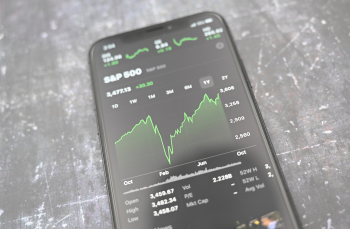A new classification for physical gold
Under Basel III, physical gold has been reclassified as a Tier 1 asset, a category reserved for the safest and most liquid assets, such as cash and high-quality government bonds. This reclassification marks a major change in the way banks view and use gold on their balance sheets.
Prior to the introduction of Basel III, gold was often classified as a Tier 3 asset, an asset class characterised by higher risk and lower liquidity. Tier 3 assets include complex and less transparent financial instruments, whose valuation can be uncertain in times of financial stress. As a result, these assets were subject to significant haircuts in the calculation of banks' capital reserves, limiting their usefulness as a buffer against economic crises.
As a Level 1 asset, physical gold will now be considered a pillar of stability for financial institutions. This means that banks can count this gold at 100% of its market value in their capital reserves, which puts it on an equal footing with the other most secure assets. This reclassification is a recognition of the intrinsically stable and tangible nature of gold, which, unlike paper gold or derivative contracts, does not depend on the solvency of a counterparty and is not subject to the same types of systemic risks.
The rise of physical gold on bank balance sheets could lead to an increase in demand for this asset, as banks seek to bolster their reserves with assets that are not only safe, but also fully valued under the Basel III regulatory framework. This could have a positive impact on gold prices in the long term, as financial institutions reassess their asset management strategies in the context of tighter regulation.
The impact of the Net Stable Funding Ratio (NSFR)
The Net Stable Funding Ratio (NSFR) is another key component of the Basel III reforms. This ratio requires banks to maintain a balance between their long-term assets and their liabilities, in order to guarantee their financial stability over an extended period. In the context of gold, the NSFR introduces a crucial distinction between physical gold and unallocated (or paper) gold.
Unallocated gold assets, such as derivative contracts, can only be counted at 85% of their market value towards the NSFR. This means that these assets are considered less secure and less liquid than physical gold, which encourages banks to reduce their exposure to these instruments and turn more to physical gold to strengthen their balance sheets.
This distinction between physical and unallocated gold has profound implications for the market. Unallocated gold contracts, which have long been a mainstay of trading in the gold market, are seeing their role reduced under Basel III. This could lead to reduced liquidity in the gold derivatives market, while increasing demand for physical gold, which is becoming a preferred choice for banks seeking to comply with the new regulations.
Implications for the gold market
The Basel III reforms could profoundly transform the gold market. With increased demand for physical gold, gold prices could come under significant upward pressure. Indeed, as banks adjust their portfolios to comply with the new requirements, demand for physical gold could outstrip available supply, driving up prices.
In addition, the reduction in the importance of unallocated gold contracts could also change the way in which gold prices are determined on the financial markets. Traditionally, gold markets have been largely influenced by derivatives trading, with paper gold playing a central role. However, with Basel III, the market could move towards a more physical gold-centric pricing, offering greater transparency and reducing the risk of price manipulation.
A New Paradigm for Investors
For investors, the Basel III reforms present both challenges and opportunities. Increased demand for physical gold, coupled with pressure on prices, could offer opportunities for significant gains for those holding physical gold. In addition, the transition to a more physically focused gold market could offer greater stability and protection against market fluctuations.
However, it is also essential for investors to understand the risks associated with these changes. Reduced liquidity in paper gold markets could lead to increased volatility, particularly for those with high exposure to derivatives. It is therefore crucial to reassess gold investment strategies in the light of these new regulations.






